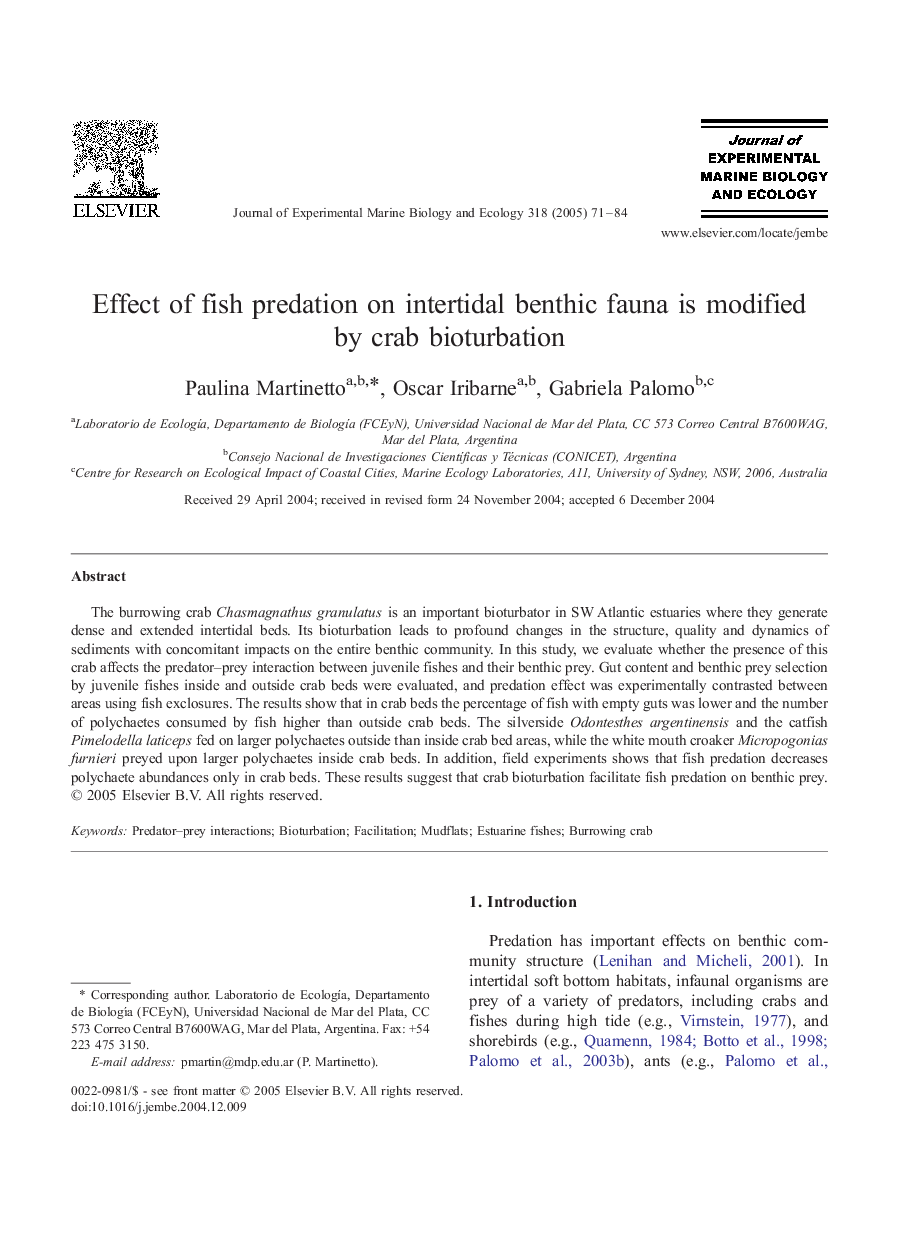| Article ID | Journal | Published Year | Pages | File Type |
|---|---|---|---|---|
| 9448796 | Journal of Experimental Marine Biology and Ecology | 2005 | 14 Pages |
Abstract
The burrowing crab Chasmagnathus granulatus is an important bioturbator in SW Atlantic estuaries where they generate dense and extended intertidal beds. Its bioturbation leads to profound changes in the structure, quality and dynamics of sediments with concomitant impacts on the entire benthic community. In this study, we evaluate whether the presence of this crab affects the predator-prey interaction between juvenile fishes and their benthic prey. Gut content and benthic prey selection by juvenile fishes inside and outside crab beds were evaluated, and predation effect was experimentally contrasted between areas using fish exclosures. The results show that in crab beds the percentage of fish with empty guts was lower and the number of polychaetes consumed by fish higher than outside crab beds. The silverside Odontesthes argentinensis and the catfish Pimelodella laticeps fed on larger polychaetes outside than inside crab bed areas, while the white mouth croaker Micropogonias furnieri preyed upon larger polychaetes inside crab beds. In addition, field experiments shows that fish predation decreases polychaete abundances only in crab beds. These results suggest that crab bioturbation facilitate fish predation on benthic prey.
Related Topics
Life Sciences
Agricultural and Biological Sciences
Aquatic Science
Authors
Paulina Martinetto, Oscar Iribarne, Gabriela Palomo,
